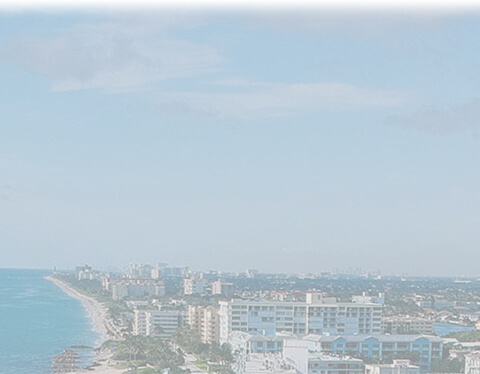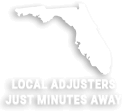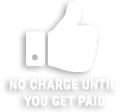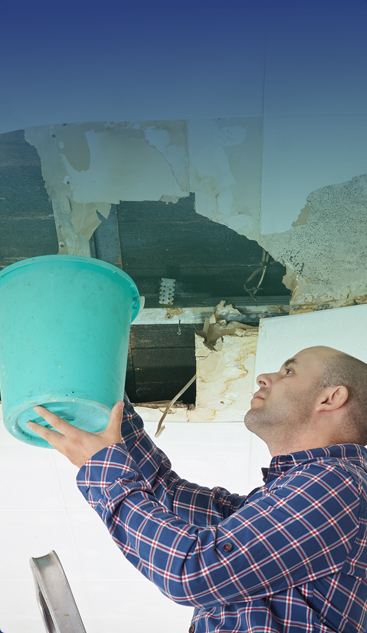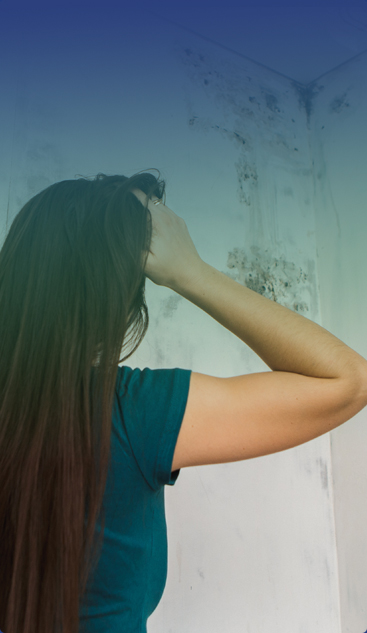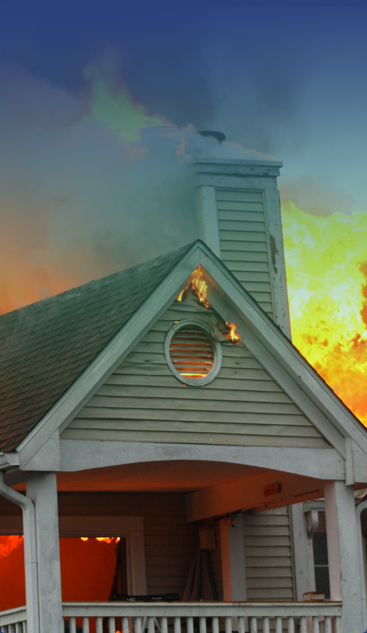Does Homeowners Insurance Cover Hurricane Damage?
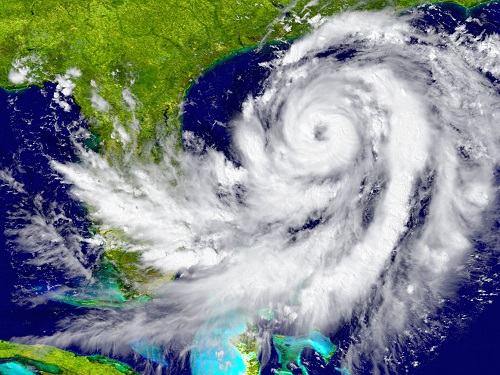
Hurricanes can happen unexpectedly. Your neighborhood will be impacted by strong winds, torrential rains, and flying debris within 36 hours when it comes through. These massive storms can produce winds up to 155 miles per hour and cause water levels to rise as much as 20 or 30 feet. The winds and heavy rains can cause extensive damage, including downed trees and power lines, flood damage, broken windows and doors, and even homes collapsing.
In the event of a hurricane, evacuating can help to keep your family safe. But for property, which doesn’t have the luxury of moving, homeowners insurance is the best way to ensure you will be able to make repairs in the event of damage. Most homeowners’ policies include coverage for wind damage, falling debris, lightning strikes, and certain types of water damage (flood insurance is separate). Read any policy you’re considering very closely to see if it covers damages likely to affect your area in the event of a major storm.
The devastating effects of hurricanes can take months to clean up. If your property is damaged, Pinnacle Claim Services is available day and night to help you assess the damage and receive the most from an insurance settlement. We can help get your life back in order quickly, contact us online or call (954) 466-2954.
What Does Homeowner Insurance Cover for Hurricane Damage?
Your home insurance policy can protect against hurricane damage in several ways:
- If you have damage to your home’s structure, dwelling coverage may pay for repairs up to the policy limit.
- If your personal belongings are damaged, personal property coverage could pay to repair damaged items.
- If your home is unlivable due to damage, loss of use coverage may pay for a hotel, meals, and some living expenses.
Read more below about each type of coverage and what these policies could include.
Dwelling Coverage
Dwelling coverage is defined as insurance that covers the structure of your house, including the attached garage, countertops, flooring, and built-in appliances. Dwelling coverage may pay to repair or replace key elements of your home’s structure, potentially including rebuilding parts from scratch.
Dwelling coverage is standard in homeowners insurance policies. Perils that are usually covered by dwelling coverage include:
- Fire
- Hail or windstorm
- Lightning strikes
- Tornadoes
- Explosions
- Falling objects
- Theft and vandalism
- Damages caused by the weight of snow or ice
- Damages caused by motor vehicles
- Accidental discharge or overflow of water or stream
Personal Property Coverage
Personal property coverage is often referred to as “contents” coverage, as it helps with costs associated with loss or damage to personal items, aka the contents of the home.
Personal property encompasses items such as:
- Kitchen appliances
- Electronics
- Clothing
- Art and collectibles
- Bicycles
- Jewelry
- Furniture
Loss of Use Coverage
Loss of use coverage is usually included in homeowner policies and could pay for daily expenses such as food and hotel if you cannot stay in your home. Loss of use and associated living expenses could include:
- Temporary housing
- Fuel costs
- Utilities
- Food expenses
- Storage units
- Pet boarding
- Laundry
- Moving expenses
- Transportation fees
What is a Hurricane Deductible?
Some policies have a separate deductible for hurricane damage, which can be higher than the standard deductible or a percentage, usually 1-5%, of one or more of your coverage limits.
These deductibles are most common if you live in high-risk areas, such as along the Atlantic Coast. They apply once a storm has reached a certain strength.
If a storm moves past a tropical depression and becomes a “named storm” that causes damage to your home, then the hurricane deductible will apply. For example, your hurricane deductible could be 2% of your dwelling coverage. If your dwelling coverage policy is for $200,000 and you file a claim for $10,000 then, if your claim is approved, you will receive $6,000 and be responsible for the remaining $4,000.
The circumstances in which a hurricane deductible will apply differ from state to state. In the state of Florida, a hurricane needs to be officially declared a named storm by the National Hurricane Center of the National Weather Service. The hurricane deductible applies from the beginning of the hurricane watch or warning issued by the National Hurricane Center and ends 72 hours after the last hurricane watch or warning is issued.
Hurricane Damage Caused by Wind
High-speed winds are a destructive part of a hurricane, and damage is usually covered in a standard homeowners insurance policy. However, the level of coverage and types of covered perils can vary depending on your house’s structure and belongings.
It is recommended to read your policy thoroughly and make any necessary adjustments to confirm your limits are within the potential cost of repairing or rebuilding your home. If you are in the process of filing a claim, a Florida weather damage claims adjuster from Pinnacle can assist you with reviewing your policy, determining the coverage provided, and seeking the maximum amount of benefits available under the language of your policy.
Hurricane Damage Caused by Flood
Flood damages are excluded in typical homeowners insurance policies available from the most-common carriers. Water damage is often covered when it infiltrates from a roof leak, damaged window, or sources other than the ground. The common rule is that “once water touches the ground” and then finds its way into your home, the damage caused must be covered by a flood policy, not homeowners insurance.
The Federal Emergency Management Agency states that even 1 inch of floodwater can cause $25,000 in damage. You can purchase a separate flood insurance policy backed by FEMA, and some insurers offer a flood endorsement that can be included in your policy. Speak to your insurance agent to ensure your property is protected in the event of flooding.
What Do I Have to Do After a Hurricane Hits My House?
Once the storm has subsided and severe weather warnings give the all-clear, it is critical to immediately begin taking steps to contain the damage that has impacted your home. Failing to do so could result in secondary damage not directly caused by the storm event. This type of damage is typically not covered by the insurer, and it may result in a gap between the overall benefits available and the full costs of repairs.
Take Precautions Before Re-entering
While time is of the essence when reacting to hurricane damage, it is far more important to take steps to protect your own health and safety. Make sure that local authorities have first indicated that it is safe to return to your neighborhood and your home.
When you arrive, don’t assume that the danger is over just because the hurricane has passed. Look for downed power lines and other hazards, including possible structural instability. If you feel that the risk of electric shock or other severe injury is likely, do not re-enter the property. Report any downed lines immediately, and seek out assistance from a provider of disaster remediation services. Note that Pinnacle can assist you with this step as you move to deal with the damage.
Upon re-entering the property, watch carefully for glass, nails, and other hazardous debris. You will likely need a respirator mask, gloves, sturdy boots, and other protections in order to safely enter the home. Again, do not enter if you fear the structure has been damaged to the extent that a major collapse is possible.
Shut off All Utilities If You Have Not Already Done So
If you are not re-inhabiting the home immediately (and if you have not done so already), shut off the main water supply to the house. If it is safe to access the electrical junction box, shut off power to rooms that will not be in use. If your air conditioner can operate safely, do not shut it off, as it will help reduce the rate of mold growth in the home.
Take Photos of the Damages
Before performing any remediation work, take photos of the home and its various damaged elements. Include wide shots of the home’s exterior and medium and close-up photos of specific areas of damage. Don’t neglect to take photos of damaged interior elements of the home, including flooring, appliances, furniture, and fixtures.
Clean Away Large Debris
If you are able to do so safely, remove large debris from your yard and the structure of the home. Be cautious about large branches, which weigh more than they might seem. These will likely need to be cut with a chainsaw or treesaw and removed in pieces.
To reiterate once more: be extremely cautious, and use your sense of the stability of any heavily damaged structures or trees before moving any large debris away. Once these items are cut into pieces or removed, they may no longer be supporting large structural elements.
Review your local guidance on storm cleanup to see if debris should be placed curbside or in some other designated area. Work on clearing large items first before moving to smaller ones. Avoid picking up glass or sharp metal without reinforced work gloves. Always use caution when lifting, and get assistance for heavy or unwieldy objects.
Cover Up Any Damaged Windows or Structural Breaches
If you have smashed windows or holes in any part of the home, you will want to act quickly before the elements begin to have a greater effect. Use tarps for irregular-shaped holes, and weigh them down securely with bricks or heavy planks to sufficiently cover the damaged area.
You can find contractor plastic to cover up damaged windows, or you can use plywood or other large boards.
Be extremely cautious before going on a roof or a higher-story room with a large structural breach. Consider using a harness or other securing system to safely complete the remediation work.
Seek Professional Help Rather Than Risking Your Own Safety
If at any point you feel like you are unable to perform any of the above remediation tasks in a reasonably safe manner, then you should entrust the job to professionals. Reach out to Pinnacle Claim Services for fast recommendations on reputable disaster remediation services in your area. Drying the home and preventing further water damage or intrusion of the elements is critical.
It is also paramount to begin the claims process as soon as possible. Working with a public adjuster company near you can help make the process easier and less stressful while making it more likely that you’ll receive the full benefits needed to repair your home.
Getting What You Deserve from the Insurance Company
Because Florida is prone to hurricanes, good homeowners insurance comes at a high price.
If your property is damaged during a hurricane, ensure you get the most from your insurance provider. An experienced Pinnacle public adjuster will help you evaluate the extent of your loss and then negotiate with insurers. Our public hurricane Ian adjusters prioritize helping you obtain a fair settlement, getting you the money you need to recover and move on with your life.
Florida Public Adjusters You Can Rely On
Experiencing property loss or damage so extensive that your home becomes unlivable can be a devastating and traumatic experience. Our public adjusters work for you, not the insurer, so you know you have an experienced professional in your corner to guide you through the process.
Pinnacle public adjusters have long-standing relationships with trusted technicians who can provide essential services, such as water extraction, removing debris, drying your structure, deodorizing the property, and cleaning and sanitizing affected areas.
Our public adjusters will take the worry and stress out of your hands, so you can focus on your health and loved ones. To get a free consultation and review, call us at (954) 466-2954 or fill out our contact form. We are available 24/7, so do not hesitate to call. One of our Florida public adjusters will respond quickly to help you examine your options.



